Install a Full-Frame Replacement Window: Removing Old Trim and Measuring for a New Window in a Brick Wall
Remodeler Mike Sloggatt starts this tricky remodeling project by carefully removing old trim and measuring for a new window.
TRANSCRIPT
Associate editor Patrick McCombe: We recently heard from a number of you asking when we were going to show how to install a new full-frame replacement window in a brick house. It’s a reasonable request. After all, installing a new window in a brick home is a tricky job. We enlisted the help of Mike Sloggatt, who has been remodeling brick homes for 30 years. In this series, you’ll see how Mike measures for a custom-sized replacement window; removes the old work; furs the rough opening; integrates the new flashing system with drainage plane; installs the new window complete with PVC trim; and finally, finishes the interior with a new stool, aprons, and casing. Let’s catch up with Mike as he measures for the new window.
Remodeler Mike Sloggatt: I’m going to measure the interior of the window. I want to make sure I get the right size, so I have to take the casing off to get a real accurate measurement.
Patrick: When you pull the casing, you also find out if there are weight pockets or water intrusion issues that need to be dealt with before installing the new window.
Mike: I use a nice thin pry bar, so I can get it underneath the molding without damaging it. Be careful around the plaster. I’m going to level a line across the top so that I can get a real accurate measurement of the height of the window. I come down to the bottom and draw a bottom line also.
Patrick: Mike transfers the frame dimensions to a spot on the wall, where he can measure the frame without interference from the existing window stool. Measure the window width at the top, middle, and bottom—and use the shortest dimension when you order the window, so it is sure to fit in the existing opening. When you’re measuring a window in a brick house, you want to record the brick-to-brick measurements both horizontally and vertically on the outside, and the window frame dimensions on the inside. With a brick home, there’s little room for error—so measure carefully and consult the manufacturer’s website or talk to a knowledgeable salesperson at the window showroom for further details on how your specific window maker wants you to measure for a brick opening.
Videos in the Series
-
Install a Full-Frame Replacement Window: Removing Old Trim and Measuring for a New Window in a Brick Wall
-
Install a Full-Frame Replacement Window: How to Remove Old Window Sashes and Jambs From a Brick Wall
-
Install a Full-Frame Replacement Window: How To Flash a Window Rough Opening in an Existing Brick Wall
-
Install a Full-Frame Replacement Window: How to Install and Air-Seal a New Window in an Old Brick Wall
-
Install a Full-Frame Replacement Window: How to Install a PVC Exterior Casing on a Window in a Brick Wall
-
Video Series: How to Install Interior Extension Jambs and Window Trim

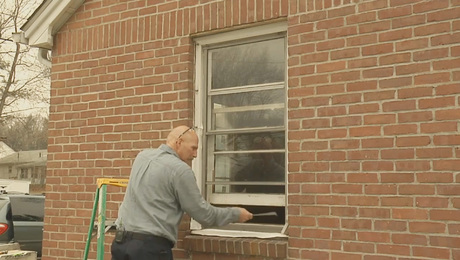
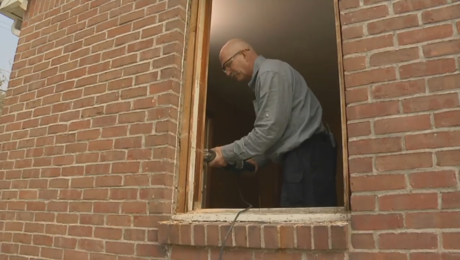
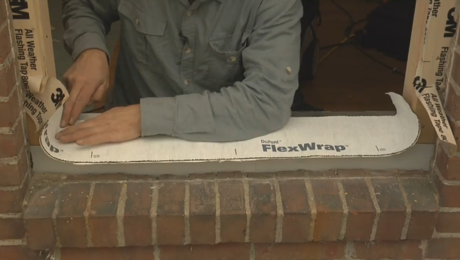
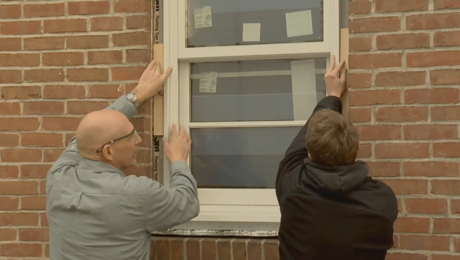
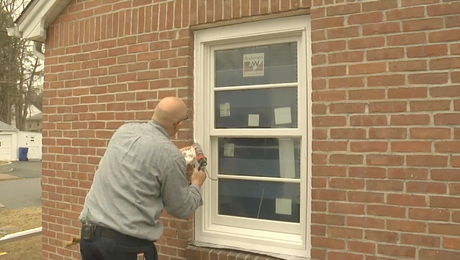






View Comments
Would you frame out if it was a true brick building? I have a "brick & block" construction where there is brick tied to block behind it with no studs or small studs (2x3).
"One of the reasons we decided to replace the entire window with its frame was because we found rot in the corners." This alone is not a strong enough reason to pay full price to replace the entire wooden window. It appears as if all the wood on the interior casing, the window sash, and the window stool are in fine condition - no rot and not even cosmetic damage. It is cheaper for the homeowner to repair or replace only the rotten wood piece(s) and leave the rest of the original window and storm window intact. Window replacement companies deceive homeowners by telling them that only new windows will save them electricity. This is not true. Correctly operable, sealed and weatherized old windows can be more efficient than replacements. The windows shown in this video already had storm windows to increase their efficiency. In addition, repairing and restoring old windows is more sustainable for our environment. No new windows need to be manufactured and shipped. "The cheapest building is one already standing." Some tools for restoring old windows can be found at https://www.eco-strip.com.